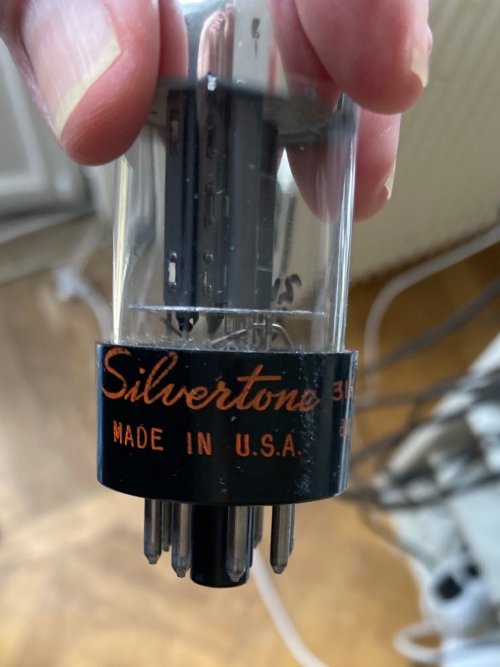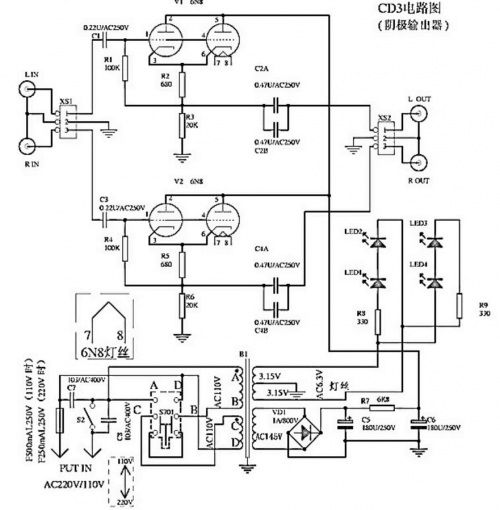It depends on the circuit. If the two sections are run in series, now you have two voltage gain stages - double the gain, double the voltage swing into the output stage, more power if the output tube can swing the voltage without clipping.
If the sections are run in parallel, the voltage gain of a single section will be maintained, but the output impedance will be halved. This can be beneficial when driving the input capacitance of the output stage - a low pass RC filter is formed form the output impedance of the input stage and the input capacitance of the following stage. The lower the output impedance of the input stage, the higher the rolloff frequency of the filter, ideally outside the audio band, >20kHz. This is only an issue with those output tubes with relatively high input capacitance, 300B is a good example.
Yet another thing you can do with a dual section triode is run one section as a voltage gain stage in series with the second section as a cathode follower. Similar to the parallel scenario above, you will get the voltage gain of a single triode, but a much lower output impedance than running in parallel, due to the cathode follower buffer. A cathode follower does not add any additional voltage gain, it operates at near unity gain, gain of 1, but will actually be less than 1 in reality. The same benefits of low output impedance apply here. It will be much lower than a parallel section dual triode though, it can be approximated by 1/gm of the tube at its operating point (gm = transconductance).
You can even run both sections as cathode followers in parallel - each section's output impedance approximated by 1/gm as before, now divide that in half to account for both sections in parallel. The disadvantage here is there is no voltage gain! So this is uncommon unless you need a pretty hefty buffer to drive an output stage - it would require an additional voltage gain stage before it.
Yet ANOTHER thing you can do is run both triodes together in a SRPP configuration, which has similar benefits to the "voltage gain stage in series with cathode follower" setup, but I won't get into the details as it starts to get pretty technical.
Was there a specific amplifier you had in mind?

























 of course if you like the sound of second harmonic distortion, what some people call "tube sound", it might be an upgrade!
of course if you like the sound of second harmonic distortion, what some people call "tube sound", it might be an upgrade!
 This is supposed to be a mini open house for my wife's pottery studio but I should be able to sneak a few of the husbands inside for some serious listening.
This is supposed to be a mini open house for my wife's pottery studio but I should be able to sneak a few of the husbands inside for some serious listening.